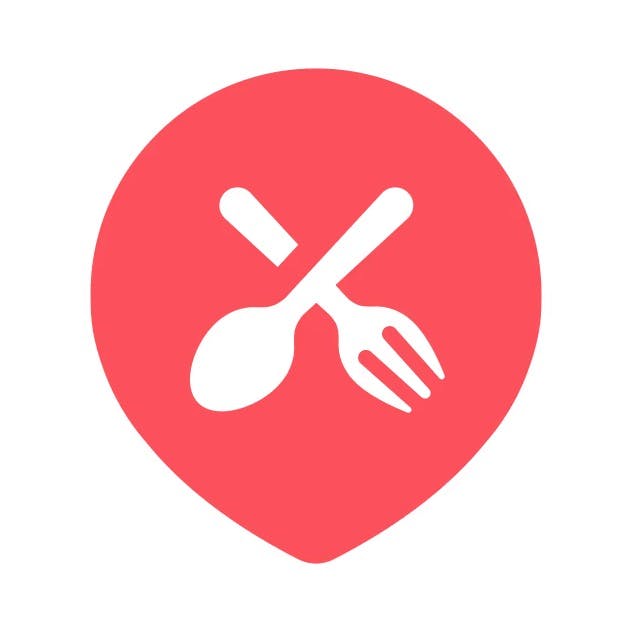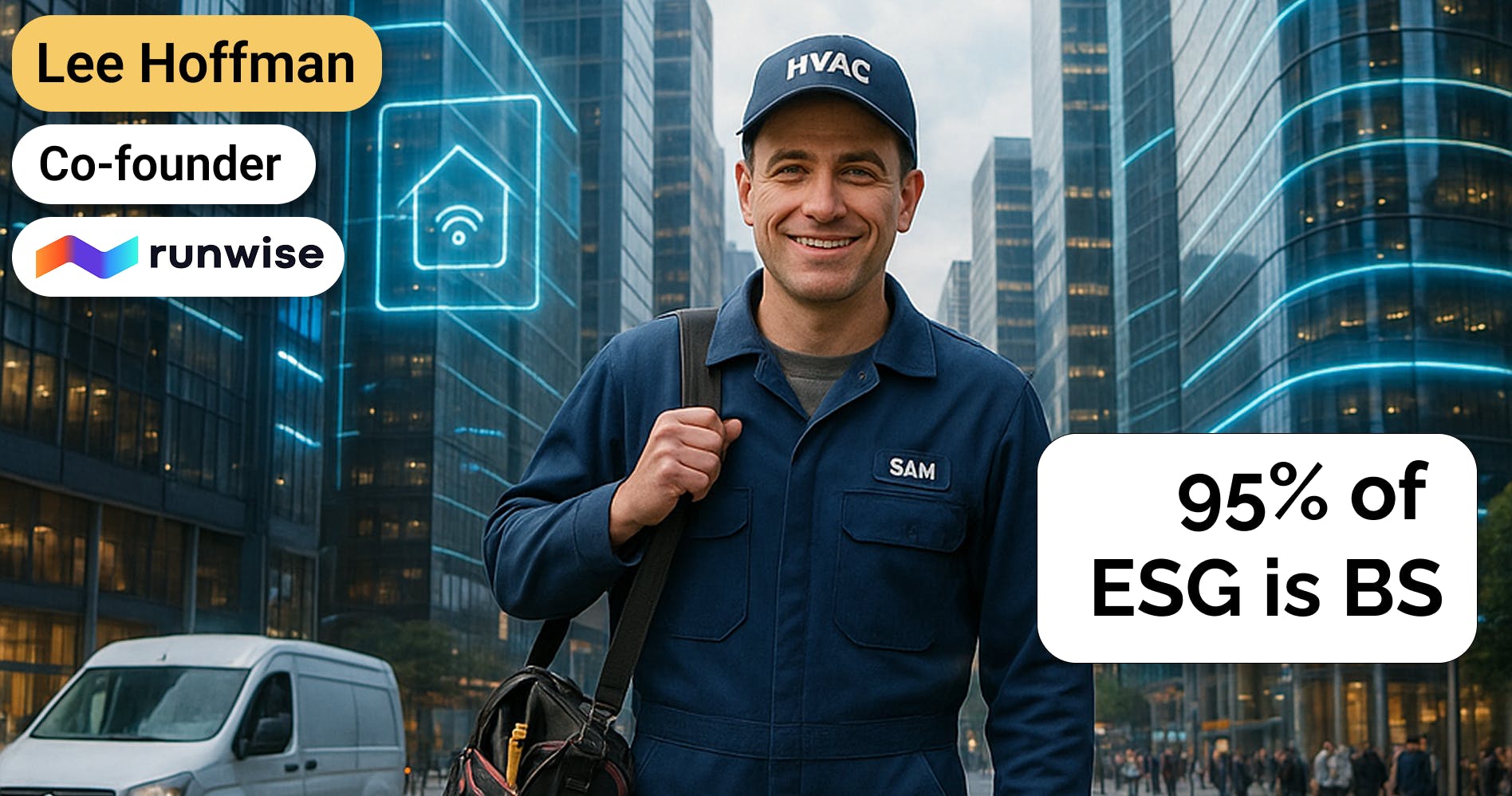Chris Webb, CEO of ChowNow, on the new restaurant stack
 Jan-Erik Asplund
Jan-Erik Asplund

Background
Chris Webb is the CEO and co-founder of restaurant ordering and delivery platform ChowNow. We talked to Chris to learn more about the emerging "restaurant stack", how the economics of pickup and delivery are changing post-COVID, and the role of aggregators like DoorDash and Uber Eats in a world where restaurants run their own first-party ordering and delivery.
Questions
- It’s been a challenging couple of years for restaurants—lockdowns, reopenings at 20% capacity, demand shifting from in-person dining to delivery. Across 3rd-party delivery platforms the take rate has been around 30%. Could you give us your own history on what your customer has been going through over the last few years? What are their biggest challenges today and how are restaurant owners thinking about the next 5-10 years?
- What does the typical tech stack look like both for a more tech-forward restaurant as well as a traditional restaurant? What might they use for website building, for a mobile app, POS, delivery, and logistics?
- Do you see restaurants using tools like Wix or Squarespace to build websites?
- What does this unbundling of the stack look like from a unit economics perspective for restaurants? Is it roughly the difference between 30% of each order going to DoorDash vs. 15-20% of it going to ChowNow/et al? Is there an advantage to paying for SaaS as opposed to paying per order as with DoorDash et al?
- DoorDash is a marketplace building its own vertical SaaS—launching a financing arm, advertising features, healthcare offerings, education benefits, and access to staffing services over the last year. What do you make of this kind of trend? Do restaurateurs think they’re aligned with marketplaces and want to move their stack over, or do they feel adverse towards them because of their high take rates?
- Marketplaces like Uber Eats and DoorDash are unbundling their delivery functions and offering it as a utility to vertical SaaS players. Can you talk a bit about this trend? How do the economics work out such that it’s profitable for restaurants to use this but not rely on the marketplaces for the full stack of services? Who do you think is winning in the logistics space and why?
- We’ve noticed a larger trend around vertical SaaS companies of combining software subscriptions with monetizing transactions and also having a marketplace. Can you help us understand how you see your strategy around executing vertical SaaS for restaurants? How is it different from the approaches of Toast or DoorDash?
- One thing that we observed is restaurants are often these mom-and-pop affairs, people who are good at hospitality, passionate about food, and famously less business savvy. So it seems like ChowNow, this third model relies on folks leveling up a little bit on the business acumen side. Is that something you're seeing and is that something Covid has accelerated?
- What do you think happened w/r/t all the ideas for ways for restaurants to create more predictable/recurring/higher-margin cash flow that emerged during the pandemic—subscriptions, all-day cafes, gift cards, events. Do you see restaurants caring about these or no?
- Do you think about cloud kitchens—which can produce diverse restaurant concepts designed for delivery at scale—as potential customers or competitors (if they vertically integrate around delivery) of ChowNow?
Interview
It’s been a challenging couple of years for restaurants—lockdowns, reopenings at 20% capacity, demand shifting from in-person dining to delivery. Across 3rd-party delivery platforms the take rate has been around 30%. Could you give us your own history on what your customer has been going through over the last few years? What are their biggest challenges today and how are restaurant owners thinking about the next 5-10 years?
No doubt, it has been a very, very difficult few years for restaurants. That is obvious for just about anyone that's paid attention.
What is talked about a little less is that there are some restaurants who financially have very much benefited from the move to takeout. Those are traditionally restaurants that already did a lot of takeout, who had food that travels well. I've had conversations with restaurants—many of them ChowNow clients, but not all—over the last two to three years who actually were hitting all-time record numbers for revenue.
You heard less from them in part because there was so much pain out there and a lot of focus was on the massive numbers of restaurants negatively impacted from the pandemic.
But these restaurants that were doing well that found themselves in the right place at the right time also didn't really want the press of how well they were doing—because they felt bad for their friends who owned restaurants—that were maybe more fine dining and sit-down and others—that were just crushed in 2020.
Many restaurants have learned that takeout can be a very profitable and worthwhile part of their business model, something that will especially help local restaurants financially as we look out over the next 5-10 years.
What does the typical tech stack look like both for a more tech-forward restaurant as well as a traditional restaurant? What might they use for website building, for a mobile app, POS, delivery, and logistics?
Part of the challenge in answering the question is that defining typical is nearly impossible. You have your French Laundry, you have McDonald's, and you have your little popup that's run two days a week out of a back alley, and they're all considered restaurants—but could not be further apart in terms of how they operate.
Within the realm of the many tens of thousands of restaurants we work with at ChowNow, point of sale technology is now standard and has been for a little bit. Restaurants are probably the last industry to move to cloud-based anything, but they’re catching up when it comes to cloud-based point of sale systems.
Some of the “new school” point of sales systems are seeing quite a bit of traction and momentum—Toast is clearly a powerhouse and has built a really great product and brand over the last few years; Clover and Square are right up there, too.
There are probably about five or six modern, cloud-based point of sale systems that almost every restaurant has either just moved to or is moving to. I think in four or five years you'll have a hard time finding a restaurant that's not using a cloud-based point of sale system. Initially, adoption was slow, but it has picked up a lot of steam in the last two or three years, and I do think Covid has played a factor.
There are a lot of new restaurant openings finally after being so slow for a while. Obviously, Covid drove a lot of restaurants out of business as we're all aware, but a majority of the people behind the restaurants didn't go anywhere.
They're still restaurant people—they love restaurants, they love food, they love everything about restaurants and food. Many of them are now coming back with a new version of something that they've dreamed of opening, that sat on the sidelines for a couple years or a year, and now you're seeing a lot of restaurants opening. And when you open a new restaurant, there’s a really strong chance you’re going to adopt a cloud-based point of sale system. I can't think of any restaurant that I've seen open in the last 6 to 12 months that doesn't have a cloud-based point of sale system.
In terms of the rest of the tech stack, takeout is a big focus. This is obviously where ChowNow plays. When Covid hit, we had the right product that restaurants all needed, and therefore, we grew quite a bit over the last few years. What I believe restaurants have learned, in my opinion, is that they need a diversified revenue stream. Even sit down restaurants that did little to no takeout are all now thinking about takeout– whether it's pickup and/or delivery– they all have a playbook for it. It might be in the form of a modified menu offering some of their favorite dishes (that also travel well) versus their entire menu; the menu may not change all that often, it's something they run on the side.
Just about every restaurant—with few exceptions—is thinking about takeout and runs some type of takeout program. Again, there's some exceptions—some very fine dining restaurants still don't do takeout—but by and large, a much larger percent of the industry offers some level of takeout today than three or four years ago. I think that’s here to stay.
There are others out there in the space. Goldbelly has grown quite a bit, which is a different version of takeout.
A broader theme here is that restaurants are increasingly thinking about how they can drive business revenue from outside their four walls. The key of the game is not being reliant on any one thing—which has been true of many other businesses and industries for so long, just not restaurants.
No one wants to get caught like they did in March and April of 2020 when their revenue went to zero because they didn't do any takeout prior to the pandemic.
Do you see restaurants using tools like Wix or Squarespace to build websites?
There are a lot of very good inexpensive website builders these days, and I don't think there's one that dominates the industry.
What we see at ChowNow is five to 10 different providers, including Wix, Squarespace, and GoDaddy. There are a couple others that are specific to restaurants that we see—we've partnered with a company called Fisherman that specializes in restaurant websites.
There’s a few others that specialize in restaurant websites. On the other hand, the Wixes and Squarespaces and GoDaddies of the world have all created specific website builders for restaurants, so they've verticalized their offering with features designed for restaurants.
WordPress is still around. We see them often in WordPress templates. I don't think we've seen a massive shift in the last two or three years. What we don't see very often are custom websites. Typically the budget that restaurants put aside for websites is in the $20 to $80 a month range, which makes WordPress an affordable option.
What does this unbundling of the stack look like from a unit economics perspective for restaurants? Is it roughly the difference between 30% of each order going to DoorDash vs. 15-20% of it going to ChowNow/et al? Is there an advantage to paying for SaaS as opposed to paying per order as with DoorDash et al?
I can speak to what we see and what our pricing comes out to be.
First, on the delivery apps—there are three or four different companies that have nearly identical business models and pricing —restaurants by and large are not happy with them because they are not created to benefit the restaurants themselves. When you know the thin margins of the restaurant industry, it is very difficult, if not impossible, for these restaurants to give up 30% plus of every single order to somebody else. In many cases, the restaurants are not really making any money.
When you layer on the fact that these large delivery app companies have all signaled that they're about to raise prices as soon as they can—via teaming up together and acting as one legal group to sue every city that has put regulations and fee caps on delivery orders in place—that 30% in my view will eventually become 35% and 40% and just continue to tick up. Partly, that’s because they need to, because many of them aren't making much money, and in some cases, they’re losing money.
I think restaurants view it as something that’s expensive today and only getting more expensive, so they need an alternative. We are one of the alternatives. We take pride in what we do. While we're not a delivery company, we provide software to help restaurants grow their revenue outside their four walls. We do integrate into various different delivery providers out there. We give restaurants full control over the delivery ordering process. If they want to pass the entire delivery fee off to their diner and not pay anything, they can do that. We don't recommend that because the higher the delivery fee on the consumer, the less the consumer is going to order.
Our recommendation to restaurants is: while you can push the entire fee off, we recommend you cover some of it—but just roughly in the neighborhood of $3 or $4, which equates to less than 10% of their overall orders.
To your question of how it compares, you pay 30% to name any one of the delivery apps—DoorDash, Grubhub, Seamless. Or, if you use ChowNow or one of our integrated partners, you as a restaurant pick up less than 10% of the cost for deliveries. It's less than a third of what they would pay for GrubHub or any of the other delivery apps out there.
DoorDash is a marketplace building its own vertical SaaS—launching a financing arm, advertising features, healthcare offerings, education benefits, and access to staffing services over the last year. What do you make of this kind of trend? Do restaurateurs think they’re aligned with marketplaces and want to move their stack over, or do they feel adverse towards them because of their high take rates?
It’s a classic “no free lunch” situation. DoorDash isn't giving anything away for free. And the thing that's somewhat laughable about that is they've spent a boatload of money—tens of millions to maybe hundreds of millions of dollars—to fight any type of regulation that would make them provide healthcare to their drivers. That’s the last thing they want to do. So if they don’t provide healthcare benefits to their own workers, why would they want to provide healthcare to restaurant workers?
To me, it’s a nice PR move, but in reality, they're talking the talk versus walking the walk. The devil's in the details and there's just not much substance behind the headlines that I've seen.
In terms of capital lending, it makes your product stickier and really makes the underlying restaurant dependent on you.
Because of that, it makes sense why DoorDash wants to do it. Restaurants typically have a hard time accessing capital, there’s not a venture-type community for restaurants, so it makes sense why they would want to get a loan wherever they can as long as the terms are somewhat reasonable.
In the conversations I've had with restaurant owners, they understand that if they become solely dependent on somebody that takes 30+% of every order, it is not a good place to be in the mid-to-long term. There’s a lot of asterisks’ and fine print riddled throughout those partnerships, too.
When it comes to operating a restaurant's menu, DoorDash only has one menu that's allowed on their system. When you talk to restaurant owners, one of the things they do in an attempt to recoup some of that 30% is they usually inflate their menu prices or raise their menu prices on DoorDash and others, which means the diner is then paying a higher menu price than they would typically if they ordered direct at the restaurant.
Because DoorDash, UberEats and others only allow you to have one menu, it's then hard to also use them for your in-store menu or your direct menu price because you don’t want to necessarily show those same higher menu prices to every single diner, even the ones that order directly from you.
A lot of restaurants use the hook, "Order directly from me for the best menu prices," so they can avoid the 30% fee. Either way, restaurants are covering the 30% costs themselves or they're having their diners pay everything, but it's not like there's multiple menus that restaurants can leverage to offer different menu prices depending on where on DoorDash you order. And so that makes it difficult to be solely reliant on one of these platforms.
Marketplaces like Uber Eats and DoorDash are unbundling their delivery functions and offering it as a utility to vertical SaaS players. Can you talk a bit about this trend? How do the economics work out such that it’s profitable for restaurants to use this but not rely on the marketplaces for the full stack of services? Who do you think is winning in the logistics space and why?
Yeah, I actually think this is probably the most predictable and potentially profitable piece of their business. And let me explain why.
If you think about DoorDash or any of the delivery apps as a three-sided marketplace with drivers as one side, diners or consumers on the other side and then restaurants making that third side of the marketplace, there is a cost with acquiring all three components and driving demand through them. At a company like ChowNow, we bring two of the three: we bring diners, who are obviously ordering food, and we bring restaurants.
That dramatically lowers the cost for someone like DoorDash where all they have to supply in the equation are the drivers to pick up the food and drop it off. If they can forecast the cost of bringing on a driver and say, "Okay, for us to deliver a package one mile, it costs us at DoorDash $X," in terms of the cost of acquiring a driver through advertising and then the cost of what they have to pay the driver—and hopefully that is very predictable for them. They can then come to us and (hypothetically) say, "Okay, it costs us $6 to deliver," and they offer delivery to us (ChowNow) at $6.50 or $7.
This way, DoorDash has simultaneously baked in profits while they control both the revenue and the underlying cost.
This business model is all much easier than picking up the cost of acquiring merchants and advertising the merchants, while also picking up the cost of consumers—which is especially expensive.
Overall, I think this kind of offering—what DoorDash calls Drive and Uber calls Direct, which is basically just API access to their courier network—is smart business.
I'm actually surprised it took Uber so long to play catch up, as DoorDash has been at this for a while.
The irony behind it is that Uber was actually the first one to offer this years ago, and then they moved on to other things and focused on UberEats. They sunset it for a while, and then they brought it back once they saw how much success DoorDash Drive was having, and now they're competing in the same sandbox.
I think it makes sense for DoorDash + UberEats. It keeps their drivers busy. It (likely) drives a fair amount of revenue. Volume is a key to their business and this is a way to make volume profitable for them. It's similar to Amazon spinning off AWS or offering up AWS to outside third parties many years ago and how successful that became for Amazon and AWS.
I think it's a pretty massive opportunity and I think the delivery apps have come to realize that there's going to be a lot of commerce that doesn't happen on their apps.
If they can still be part of the equation and deliver the package—in our case, food—and still make money off of it, it’s probably a much larger opportunity.
We’ve noticed a larger trend around vertical SaaS companies of combining software subscriptions with monetizing transactions and also having a marketplace. Can you help us understand how you see your strategy around executing vertical SaaS for restaurants? How is it different from the approaches of Toast or DoorDash?
We think that ChowNow’s marketplace is the winning formula going forward, and let me explain what I mean by that.
Since online ordering hit the restaurant industry about 15 years ago, there have been two models.
There’s been the first-party, direct ordering model which is where ChowNow plays, and where companies like Olo have played or continue to play.
If you think about the model and why restaurants love it, it’s that they get 100% of the revenue. They have direct access to the customer, they are the keepers of the customer data, and they directly manage the customer relationship. It is by far the best option for restaurants.
On the consumer side, there's a lot of friction points. You have to find the restaurant's website, hope that they have online ordering or download multiple apps on your phone, have multiple accounts—which can be cumbersome.
You then have the third party model, which is where GrubHub, DoorDash, Uber and others play. For restaurants, it's not great. Restaurants give up 30% of their revenue. They do not have direct access to their customer data and they have zero relationship with the diner when working through this model.
However, for the consumer, it's a much more convenient option. There's one app, it has all your restaurants in one place, you have one account. You open an app, you order food, you're done.
The way we view it, and what we’re trying to build with our marketplace, is something that cherry picks the best of both sides.
We want to give restaurants what they want, which is keeping 100% of the revenue and customer data. On the consumer side, we want to give people all the benefits of having that one app and that one account connected to thousands and thousands of restaurants. This new model is what we're building our marketplace around.
One thing that we observed is restaurants are often these mom-and-pop affairs, people who are good at hospitality, passionate about food, and famously less business savvy. So it seems like ChowNow, this third model relies on folks leveling up a little bit on the business acumen side. Is that something you're seeing and is that something Covid has accelerated?
Yeah, we only think this model is feasible because of Covid, largely because of how it brought the business model of the delivery apps into the spotlight for the public.
Prior to Covid, it was mostly restaurants around the country and industry folk that knew the way that these delivery app companies operated—the massive cuts they take from revenue, their business practices that are not built to benefit the restaurants themselves, etc.
When Covid first hit, there were a lot of articles around how people could help restaurants stay in business, and originally, people were talking about using delivery apps.
Very quickly, restaurants said "No, we need every dollar we can right now, and those companies are taking 30% plus off every order," and I don't know if a week went by without some publication writing an article really breaking down the delivery app business model.
As a result, the general public started to get educated, and that created a story over most of 2020 where you saw local politicians and city council members and mayors and others around the country paying attention and starting to layer in these delivery cost caps that we talked about earlier. That's why the cities are putting these kinds of regulations in place: so they can keep their local restaurants in business. All this to say, yes, the general public is much more aware of the way these delivery app companies operate.
What do you think happened w/r/t all the ideas for ways for restaurants to create more predictable/recurring/higher-margin cash flow that emerged during the pandemic—subscriptions, all-day cafes, gift cards, events. Do you see restaurants caring about these or no?
More the latter. I’ve seen firsthand cases where restaurants set up some type of subscription, and when their dining rooms open again and they get back to their core business, a lot of those subscription programs fall by the wayside. And, unless it's providing meaningful revenue, well—restaurants are working 15 hours a day as is, so it's really hard to layer in something that's not driving a whole lot of revenue for restaurants, and they tend to get dropped pretty quickly.
One specific example of what you're describing is wine clubs. Restaurants would run their own wine club and every month, their sommelier would pick a couple bottles of wine and mail it to you or you'd come and pick it up at the restaurant.
I'm still bullish on some versions of subscriptions or memberships—I do think memberships are the future for a lot of restaurants. I don't think it's going to be mandatory, but I think there's something really interesting there.
In 2020, we rolled out a very simple feature here at ChowNow that allows restaurant diners to become members of their restaurants. They pay an upfront membership fee and then get an ongoing discount for a year. That was all about cash flow and helping restaurants bring in some upfront revenue for the year which usually amounted to about 100 bucks.
With the diners that paid 100 bucks, it was better than gift cards. The issue with gift cards was that they would all get redeemed at the same time. And even though you collected money up front, all of a sudden as soon as the restaurant opened, you got slammed with gift cards and you had already paid for that revenue.
Our membership model was different because you got paid up front but then you'd give, for example, a 20% discount any time someone ordered. To get that discount, they actually had to spend money on food and order at your restaurant and do it multiple times, so that cost was spread over many orders.
We haven't built upon that original membership program that we still have today, but we hope to in the future. Perhaps not the immediate future, but it is certainly something we see value in.
I think there's a membership model that's really interesting where you become a member of your local restaurants in a similar way to how you become a member of a community like Soho House. You get different things like access to happy hours, and it creates a recurring revenue stream which restaurants don't typically have. However, I haven't seen anyone crack the code just yet.
Do you think about cloud kitchens—which can produce diverse restaurant concepts designed for delivery at scale—as potential customers or competitors (if they vertically integrate around delivery) of ChowNow?
I tend to be pretty skeptical and have been skeptical for a while of the ghost kitchen model.
I'm a big believer in “out of sight, out of mind” and it's just by the very nature of the ghost kitchen model that they're out of sight, and thus, out of mind.
They're also solely dependent on other companies for distribution—other companies in this case being the delivery apps.
It's really hard to build a business on top of somebody else's demand engine because, for example, the delivery apps can just decide to unilaterally increase their fees.
What we hear from independent restaurant owners is they're just not seeing the revenue to justify ghost kitchens. Oftentimes, there's a tremendous amount of churn across independent restaurants at ghost kitchens. This isn't specific to any one of the companies that plays in the space. This is a more general observation.
Where I have seen it working are the massive national brands. The big one that gets toted as being a ghost kitchen success is Chick-fil-A. They’re well-known, the price point of their food is right—all these things set them up well for a cloud kitchen model.
Those are the kinds of restaurants that seem to be finding success with these ghost kitchen models. They have a huge brand, and they can just look on the map and see where they don’t have coverage, and then they can go out and rent out ghost kitchens there.
Independent restaurants on the other hand are really struggling to get the ghost kitchen model to work and to be profitable. Many of them have tried it and have decided it wasn't for them.
Disclaimers
This transcript is for information purposes only and does not constitute advice of any type or trade recommendation and should not form the basis of any investment decision. Sacra accepts no liability for the transcript or for any errors, omissions or inaccuracies in respect of it. The views of the experts expressed in the transcript are those of the experts and they are not endorsed by, nor do they represent the opinion of Sacra. Sacra reserves all copyright, intellectual property rights in the transcript. Any modification, copying, displaying, distributing, transmitting, publishing, licensing, creating derivative works from, or selling any transcript is strictly prohibited.





